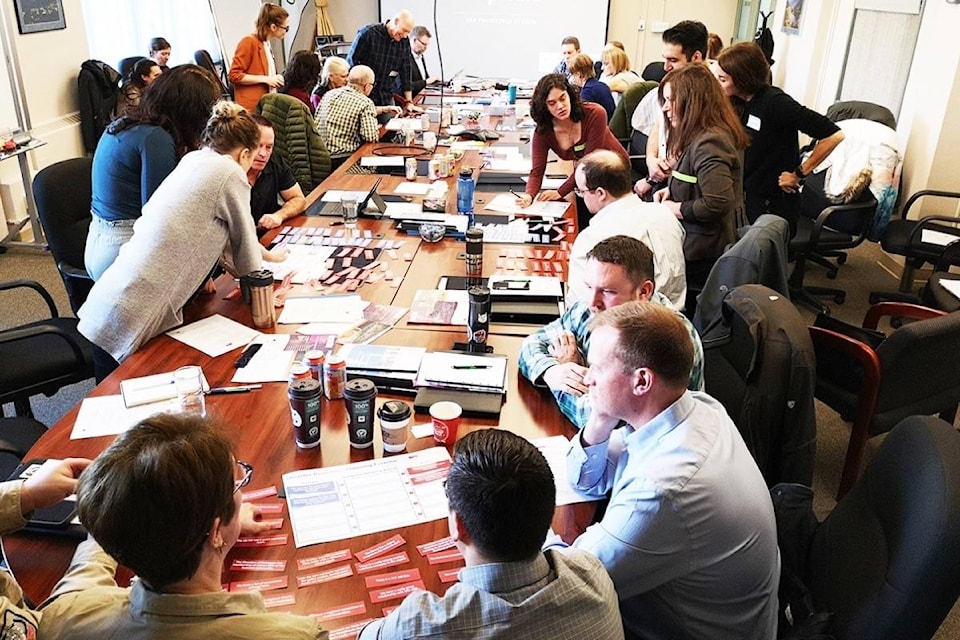Thirty stakeholders filled the Community Futures boardroom in Trail last week to discuss disaster planning.
The goal of the day-long session was to begin developing strategies and plans for economic response and recovery after a major disaster or disruption.
Disaster comes in many forms and can severely impact a community. The historic Grand Forks flood of 2018 saw 85 businesses directly impacted. Two years later, 20 per cent of those businesses have still not reopened - and many may not. It’s not IF we will have another flood, wildfire, pandemic, or other disaster, it’s WHEN.
Stakeholders represented regional and municipal government, Industry, educational institutions, healthcare, Canadian armed forces, transportation, search and rescue, economic development, business, and many other agencies and entities. Attendees first participated in a mock exercise to stimulate the resilience planning mindset, then formed working groups to begin developing plan components for impact assessments, recovery plans, communications, infrastructure, business recovery finance, and many other elements that can help mitigate economic disruption.
The workshop was delivered by Jeremy Stone, Director of Simon Fraser University’s Community Economic Development Program. Jeremy is a leader in economic resilience and has worked on various disaster recoveries including Hurricanes Katrina and Harvey, the Deepwater Horizon oil spill, the economic recovery of Lower Manhattan after 9/11, and the 2013 Colorado floods. Jeremy was accompanied by his facilitation team of three Rural Development Institute interns from Selkirk College, who will assist with drafting the economic resilience plans that will be returned to the local stakeholders.
Over the next few months, the SFU and Selkirk teams will work together to write up the initial draft plans based on the workshop outcomes. Once complete, those draft plans will be resubmitted to the community to review, edit, and fill in the gaps to ensure it represents our local needs and values.
When asked how he thought the workshop went, Stone replied: “I think the day was a great success as there was a lot of engaged, committed institutions and participants in the room.
“The future of the planning is really strong. We just need to identify where we can fill some gaps, and how both financial institutions like the Trusts, and senior levels of government, like the province and federal levels, can continue to invest in this sort of work. This could be a model for the whole province, if not the whole country.”
